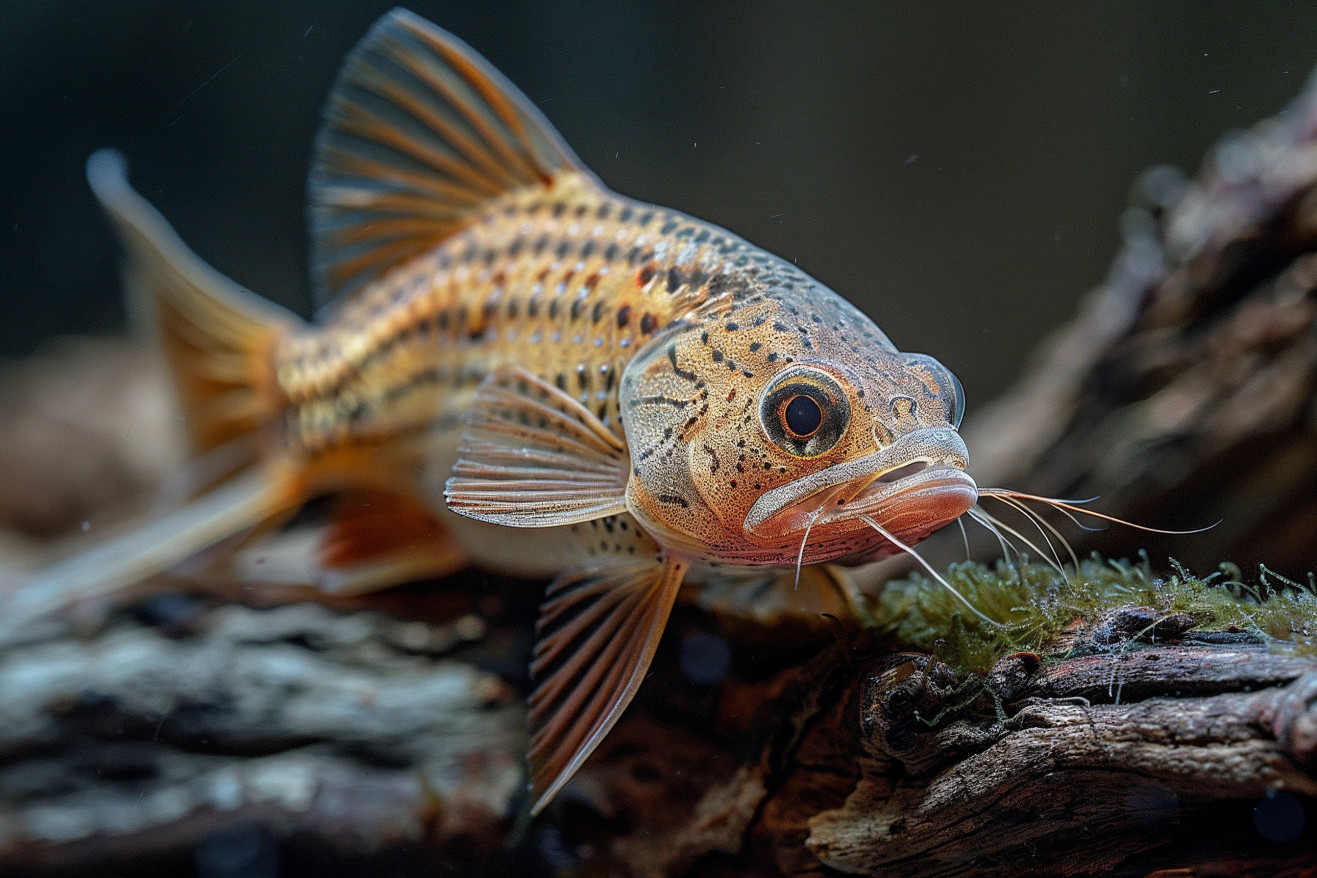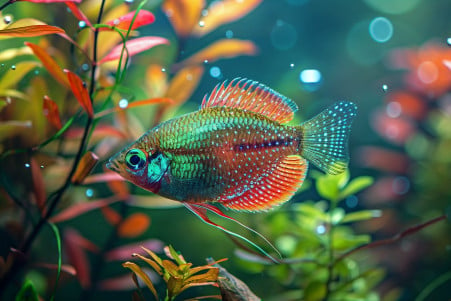Do Cory Catfish Eat Algae? A Thorough Investigation
12 June 2024 • Updated 11 June 2024

Are you dealing with an algae outbreak in your fish tank and hoping your cory catfish will help take care of it? Corydoras catfish are a great addition to a freshwater tank because they are peaceful bottom-feeders that eat algae and detritus. While they shouldn't rely solely on algae for their diet, cory catfish will eat hair algae, green spot algae, and other soft algae that grows in the tank.
To fully answer the question of whether or not cory catfish will eat enough algae to help control an algae problem, we will look at scientific research as well as the experiences of fish tank hobbyists. This investigation will cover fish biology, dietary research, and the best ways to maintain an aquarium. This way, you can learn from the evidence and get a better idea of how much cory catfish can help with an algae problem and how you can use them most effectively as part of a multi-faceted algae control plan.
Do cory catfish eat algae?
Best Foods and Feeding Schedule for Corydoras Catfish
Corydoras catfish are omnivores, so they need a mix of plant- and animal-based foods in their diet to stay healthy. A good staple diet includes high-quality sinking pellets or granules formulated for bottom-dwelling fish and algae wafers or tablets, according to Aqueon's Corydoras care guide.
However, a post on the Corydoras Forum warns that algae wafers should never be the only food in their diet, since corys are scavengers and need animal protein. To make sure your corys get enough animal protein, you can also feed them the occasional frozen or live food, such as brine shrimp, bloodworms, or daphnia.
The most important thing is to feed your corys only as much food as they can eat in 2-3 minutes, once or twice a day, to avoid overfeeding them. As mentioned in a forum post, it can be tempting to feed your corys more often because they always seem hungry, but overfeeding can lead to water quality problems. Make sure to rotate the foods you feed them to make sure they get a well-rounded diet, which will help them stay healthy and happy.
Preventing Overfeeding and Keeping Water Clean
Overfeeding is a well-known issue in aquariums and can lead to a number of problems for corydoras catfish. According to Aquarium Fish Health: Overfeeding Fish: A Common Problem and Possible Solutions, overfeeding can result in high ammonia and nitrite levels, low oxygen levels, pH changes, and algae blooms, all of which can have negative effects on the health of fish.
To avoid overfeeding, the article suggests watching the corys eat and adjusting the amount of food given until the fish eat it all in 4-5 minutes. As mentioned in a Corydoras Forum post, leaving algae wafers in the tank for too long can lead to corys overeating. Any food that isn’t eaten within the 4-5 minute window should be removed to ensure that the water stays clean and that harmful bacteria or mold doesn’t grow.
In addition, regular water changes and proper filtration are important, as noted by Aquarium Fish Health: Overfeeding Fish: A Common Problem and Possible Solutions, to make sure that water quality is good and that waste doesn’t build up. By paying close attention to feeding and water quality, aquarium owners can make sure that their corydoras catfish stay healthy and happy.
How to Introduce and Acclimate Corydoras to a New Tank
When adding corydoras catfish to a new tank, whether it’s a brand new setup or an established tank, it’s important to make sure that the fish are acclimated properly. The drip acclimation method is the best way to do this, as it will help the fish get used to the new water over the course of 1-2 hours. While acclimating, it’s important to make sure that the tank has plenty of aeration and that water quality is being monitored to ensure that the corys are able to acclimate successfully, as noted in the Corydoras Acclimation forum post.
It’s also important to make sure that the fish aren’t being exposed to any sudden changes in water quality, as this can cause stress and make the fish more susceptible to health problems or disease, according to the Aquarium Co-Op forum post. After acclimation, make sure to watch the fish for any changes in behavior or feeding and give them time to settle in before making any other changes.
Water Conditions and Health
Corydoras catfish prefer slightly acidic water with a pH of 6.5-7.0 and a temperature between 72-82°F (22-28°C), according to Cory Catfish Water Parameters | The Planted Tank Forum. It is important to keep water conditions stable and avoid sudden changes in temperature, pH, and other water parameters to ensure the health and well-being of these fish, as mentioned by Corydoras catfish • Think smart, think eSHa!.
To keep water quality high, it is important to have good filtration, change the water regularly, and test for ammonia, nitrite, and nitrate, according to Cory Catfish: Care, Diet, Size, Tankmates & Lifespan - Video. Corydoras catfish are susceptible to bacterial infections, fin rot, and digestive issues, which can often be traced back to water quality or diet. To ensure that these issues don't become more serious or lead to death, it is important to treat them with the proper medication and address the root cause of the problem.
Dealing With Health Issues and Disease
Corydoras catfish are prone to a variety of bacterial and fungal infections, especially if water quality is not kept up. According to a forum post on the Aquarium Co-Op site, some of the most common signs of disease in corydoras catfish are white or gray patches on the body, fin erosion, a lack of appetite, and lethargy.
It’s important to treat health issues quickly with the right medications, including antibiotics and antifungal treatments. In the case of the forum post, the user found that a combination of Erythromycin and salt was effective in treating the mystery disease that was killing their corydoras. In addition to this, isolating infected fish and changing the water regularly can help prevent the disease from spreading to other fish in the tank.
Feeding a balanced diet, avoiding overfeeding, and reducing stress by properly acclimating fish and keeping water conditions stable are important preventive measures, as noted in Cory Catfish: Care, Diet, Size, Tankmates & Lifespan - Video. By staying ahead of health issues and ensuring that the right conditions are in place, aquarium enthusiasts can make sure that their corydoras catfish stay healthy in the long run.
Conclusion: Using Corydoras Catfish to Control Algae
Corydoras catfish can be valuable additions to a freshwater aquarium, not only for their peaceful nature but also for their ability to help control algae growth. By providing a varied and balanced diet, maintaining optimal water parameters, and following proper acclimation and husbandry practices, aquarium hobbyists can ensure the health and well-being of their corys. While corys can effectively graze on soft algae and detritus, they should not be relied upon as the sole means of algae control.
An integrated approach, combining the use of corys with other algae-control measures, such as proper lighting, nutrient management, and manual removal, is recommended for long-term success. With the right care and conditions, corydoras catfish can be valuable members of a thriving aquarium ecosystem, contributing to a balanced and healthy environment.


